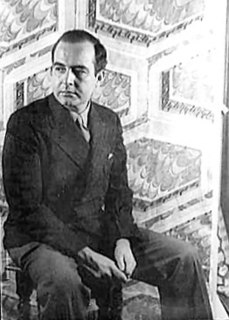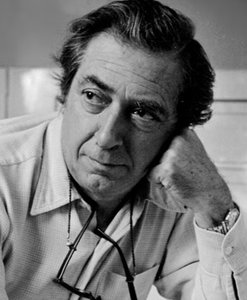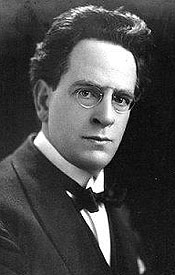
The Symphony No. 9 in E minor, "From the New World", Op. 95, B. 178, popularly known as the New World Symphony, was composed by Antonín Dvořák in 1893 while he was the director of the National Conservatory of Music of America from 1892 to 1895. It premiered in New York City on 16 December 1893. It has been described as one of the most popular of all symphonies. In older literature and recordings, this symphony was – as for its first publication – numbered as Symphony No. 5. Astronaut Neil Armstrong took a tape recording of the New World Symphony along during the Apollo 11 mission, the first Moon landing, in 1969. The symphony was completed in the building that now houses the Bily Clocks Museum.

Samuel Osmond Barber II was an American composer, pianist, conductor, baritone, and music educator. One of the most celebrated composers of the 20th century; music critic Donal Henahan stated, "Probably no other American composer has ever enjoyed such early, such persistent and such long-lasting acclaim." Principally influenced by nine years of composition studies with Rosario Scalero at the Curtis Institute and more than twenty-five years of study with his uncle, the composer Sidney Homer, Barber's music usually eschewed the experimental trends of musical modernism in favor of utilizing traditional 19th-century harmonic language and formal structure that embraced lyricism and emotional expression. However, elements of modernism were adopted by Barber after 1940 in a limited number of his compositions, such as an increased use of dissonance and chromaticism in the Cello Concerto (1945) and Medea's Dance of Vengeance (1955), and the use of tonal ambiguity and a narrow use of serialism in his Piano Sonata (1949), Prayers of Kierkegaard (1954), and Nocturne (1959).
The Columbia Symphony Orchestra was an orchestra formed by Columbia Records strictly for the purpose of making recordings. In the 1950s, it provided a vehicle for some of Columbia's better known conductors and recording artists to record using only company resources. The musicians in the orchestra were contracted as needed for individual sessions and consisted of free-lance artists and often members of either the New York Philharmonic or the Los Angeles Philharmonic, depending on whether the recording was being made in Columbia's East Coast or West Coast studios.

The Concerto for Orchestra, Sz. 116, BB 123, is a five-movement orchestral work composed by Béla Bartók in 1943. It is one of his best-known, most popular, and most accessible works.

The Carnival of the Animals is a humorous musical suite of fourteen movements by the French romantic composer Camille Saint-Saëns. The work was written for private performance by an ad hoc ensemble of two pianos and other instruments, and lasts around 25 minutes.

Sir Granville Ransome Bantock was a British composer of classical music.

Ruth Crawford Seeger, born Ruth Porter Crawford, was an American modernist composer active primarily during the 1920s and 1930s and an American folk music specialist from the late 1930s until her death. She was a prominent member of a group of American composers known as the "ultramoderns," and her music influenced later composers including Elliott Carter.

Capriccio espagnol, Op. 34, is the common Western title for a five movement orchestral suite, based on Spanish folk melodies, composed by the Russian composer Nikolai Rimsky-Korsakov in 1887. Rimsky-Korsakov originally intended to write the work for a solo violin with orchestra, but later decided that a purely orchestral work would do better justice to the lively melodies. The Russian title is Каприччио на испанские темы.

Leroy Anderson was an American composer of short, light concert pieces, of which many were introduced by the Boston Pops Orchestra under the direction of Arthur Fiedler. John Williams described him as "one of the great American masters of light orchestral music."

Edward Alexander MacDowell was an American composer and pianist of the late Romantic period. He was best known for his second piano concerto and his piano suites Woodland Sketches, Sea Pieces and New England Idylls. Woodland Sketches includes his most popular short piece, "To a Wild Rose". In 1904 he was one of the first seven Americans honored by membership in the American Academy of Arts and Letters.

Henry Thacker ("Harry") Burleigh was an American classical composer, arranger, and professional singer known for his baritone voice. The first black composer instrumental in developing characteristically American music, Burleigh made black music available to classically trained artists both by introducing them to spirituals and by arranging spirituals in a more classical form. Burleigh also introduced Antonín Dvořák to Black American music, which influenced some of Dvořák's most famous compositions and led him to say that Black music would be the basis of an American classical music.
Appalachian Spring is a musical composition by Aaron Copland that was premiered in 1944 and has achieved widespread and enduring popularity as an orchestral suite. The music, scored for a thirteen-member chamber orchestra, was created upon commission of the choreographer and dancer Martha Graham with funds from the Coolidge Foundation. It was premiered on Monday, October 30, 1944 at the Library of Congress in Washington D.C., with Martha Graham dancing the lead role. The set was designed by the American sculptor Isamu Noguchi. Copland was awarded the 1945 Pulitzer Prize for Music for his achievement.

Norman Dello Joio was an American composer whose output spanned over half a century, and who won a Pulitzer Prize in 1957.

John Herbert Foulds was an English composer of classical music. He was largely self-taught as a composer, and belongs to the figures of the English Musical Renaissance.
The Indianist movement was a movement in American classical music that flourished from the 1880s through the 1920s. It was based on attempts by classical composers to incorporate American Indian musical ideas with some of the basic principles of Western music, with the goal of creating a new, truly American national music.

Edgar Stillman Kelley was an American composer, conductor, teacher, and writer on music. He is sometimes associated with the Indianist movement in American music.

Sergei Prokofiev's Lieutenant Kijé music was originally written to accompany the film of the same name, produced by the Belgoskino film studios in Leningrad in 1933–34 and released in March 1934. It was Prokofiev's first attempt at film music, and his first commission.
Maurice Arnold Strothotte was an American composer and performer.
Sandor Harmati was a Hungarian-American violinist, conductor and composer, best known for his song "Bluebird of Happiness" written in 1934 for Jan Peerce.
The Piano Concerto No. 2 in D minor, Op. 23 by Edward MacDowell was completed in late 1885. Although some obvious similarities with Edvard Grieg's, Camille Saint-Saëns's and Franz Liszt's concertos have often been stated, MacDowell’s composition proves to be quite original, at least compared to his First Concerto. It was the first major piano concerto written by an American. It was also the only large-scale composition by MacDowell to remain in standard repertoire.















